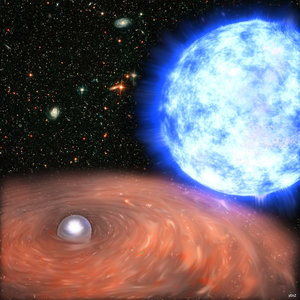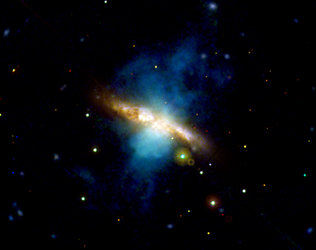Notes for Editors
"A new low magnetic field magnetar: the 2011 outburst of Swift J1822.3-1606" by N. Rea et al. is published in the Astrophysical Journal, vol. 754, 27, doi:10.1088/0004-637X/754/1/27.
Animation caption:
Animation illustrating the behaviour of recently discovered Swift J1822.3–1606, a ‘low-field magnetar’ with an intense internal magnetic field that ruptures through the star’s crust in bursts of X-ray emission.
The animation begins with a view of the star’s cracked crust, with organised field lines looped around the star. The surface then fades out to show the twisted internal field, which is many times stronger than its external field. A bright burst follows, and the field becomes less turbulent as the emission fades away.
The star was discovered on 14 July 2011 by NASA’s Swift space telescope and long-term X-ray monitoring was carried out by NASA’s Rossi X-Ray Timing Explorer and Chandra X-ray Observatory, ESA’s XMM-Newton and Japan’s Suzaku satellite. Archived data from Germany’s X-ray satellite ROSAT and ground-based telescopes Green Bank Telescope and the Gran Telescopio Canarias also provided insight into the strange star’s curious behaviour.
Credits: ESA–C. Carreau















 Germany
Germany
 Austria
Austria
 Belgium
Belgium
 Denmark
Denmark
 Spain
Spain
 Estonia
Estonia
 Finland
Finland
 France
France
 Greece
Greece
 Hungary
Hungary
 Ireland
Ireland
 Italy
Italy
 Luxembourg
Luxembourg
 Norway
Norway
 The Netherlands
The Netherlands
 Poland
Poland
 Portugal
Portugal
 Czechia
Czechia
 Romania
Romania
 United Kingdom
United Kingdom
 Slovenia
Slovenia
 Sweden
Sweden
 Switzerland
Switzerland





































